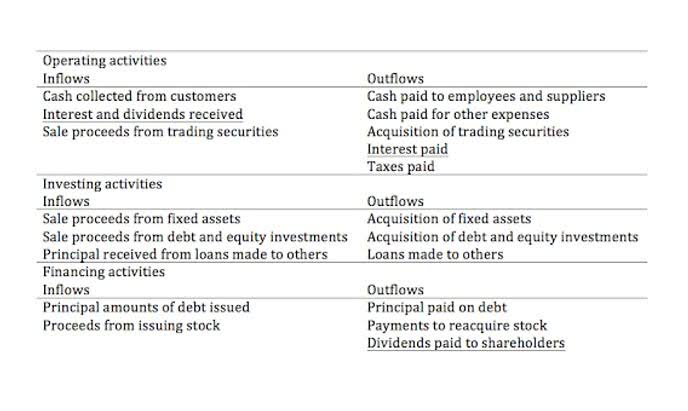Historical Cost In Accounting Concept & Examples

Analysts often adjust for these limitations by using ratios and metrics that account for inflation or updated market valuations where necessary. The cost principle in accounting convention is a fundamental concept that stipulates that assets should be recorded in financial statements at their original purchase price, also known as the historical cost. This principle is based on the belief that the original purchase price is the most objective and reliable measure of the asset’s value at the time of purchase. When businesses make their balance sheets, most of the assets are recorded at their historical costs. But there are also some highly liquid assets, such as marketable securities, that need to be recorded at their fair market value. These assets are short-term in nature, and recording their fair market value helps predict the future cash flows of the company and helps financial statement users make accurate operational decisions.
Marketable Securities

The Historical cost accounting principles are used mainly to record and measure the value of items in the balance sheet rather than items in the Income statements. This principle is used in both IFRS (the Principle Base) and US GAAP ( Rule Base). Companies issue various liabilities (such as accounts payable, bills payable, notes payable, bonds payable, etc.) in exchange for goods and services. For example, a company acquires a tract of land at an agreed price of $12,000 and issues a note payable amounting to $12,000 for the full payment. The amount of the note payable to be entered in accounting records would be $12,000. Jeff would still report the equipment at its purchase price of $10,000, less depreciation, even though its current fair market value is only $2,000.
FAQs on Historical Cost in Accounting

Financial statements prepared using the Historical Cost Principle provide a clear and consistent basis for analysis. For instance, investments in debt or equity securities are recorded on a current market value basis as they are expected to be converted to cash shortly. Accounts receivables have to be shown on a net realizable value on the balance sheet. Net realizable value is the amount of cash that the company expects to receive when these receivable accounts are paid.
Facilitates the preparation of financial statements – Advantages of Historical Cost Principle
However, years after the acquisition, YouTube’s value increased by many folds because of its popularity, and its base increased because of the rise in internet users and net speed. Usually, if the asset’s fair value is higher, then companies won’t increase the value of the asset. The accounting department of Practical Example LLC receives an invoice for the purchase of an office printer. The printer was bought on Keep Records for Small Business June 25, 2016 and the cost of the printer was $1,350; however, the invoice was received on June 28, 2016. The accounting department must decide what the proper date to record this transaction is.

Historical Cost and the Conservatism Principle
Indeed, the historical cost principle is inaccurate for deducing accounting estimates where inflation is a factor. Nevertheless, it remains valuable for businesses as it provides an objective and consistent basis for asset valuation. Marketable securities aren’t recorded at historical costs because they are highly liquid assets. For instance, share prices in investments may change, leading to an equivalent change in the asset’s valuation on the balance sheet. Such price adjustments, however, can help companies provide their investors and shareholders with complete transparency regarding asset valuation. Revaluation method states that the normal balance assets should be recorded at their fair market value.
- Over time, annual depreciation expenses are deducted from this original cost in order to determine the net carrying amount or book value of the fixed asset.
- For instance, valuing a unique piece of art or a custom-built piece of machinery might involve various assumptions and expert opinions, leading to potential inconsistencies.
- The historical cost principle simplifies the accounting process by providing a straightforward, easy-to-apply method of valuing assets and liabilities.
- There are no adjustments to these costs, except when the market price of an asset drops below its carrying amount on the books; when this happens, the cost is written down to its market value.
- However, if the value of the stock decreases to $800, the company may need to write down the investment to a lower value of $800.

For instance, during economic downturns, the historical cost principle prevents companies from artificially inflating asset values to present a more favorable financial position. This method is in line with the conservatism principle, an essential accounting philosophy emphasizing transparency and honest reporting. In conclusion, the historical cost is used to measure the asset’s value for financial purposes, but not all assets can be measured by their historical costs. Impaired assets, intangible assets, and marketable securities are recorded at their current market prices on the balance sheet. The concept of historical cost is used to prevent overstating an asset’s value when the appreciation of that asset was the result of market volatility. The historical cost principle is the basic accounting principle widely used cost principle in the U.S. under GAAP.
Examples of historical cost concept or principle
Assuming the equipment has a useful life of five years, the company will record annual depreciation expense of $2,000 ($10,000 divided by five years). This depreciation expense will be reflected in the company’s income statement, reducing its net income for the year. The historical cost principle is mostly applicable in order to record and measure the value of items, which have been disclosed in the Balance Sheet. Items mentioned on the Income Statement are not recorded in accordance with the historical cost concept. Historical cost is still a central concept for recording assets, though fair value is replacing it for some types of assets, such as marketable investments. The ongoing replacement of historical cost by a measure of fair value is based on the argument that historical cost presents an excessively conservative picture of an organization.

Fundamental Analysis: Principles, Types, and How to Use It
This is because the historical cost does not make any price adjustment for effects linked to inflation and depreciation. As such, one cannot get a fair market value for the company by calculating the historical cost of its assets and liabilities. In other words, the original cost price will be recorded when documenting asset values. The historical cost principle is one of the generally accepted accounting principles (GAAP) encapsulating the complexities, legalities, and details of corporate and business accounting.
It is relatively easy to retrieve the original cost of an asset, provided records were kept. Trade, sales, or purchase documentation are used to determine the historical cost of an asset. However, it is important to know that the historical cost may not necessarily be a true reflection of the fair value of an asset. He saves his receipt for future reference and records this on his accounting reports.


